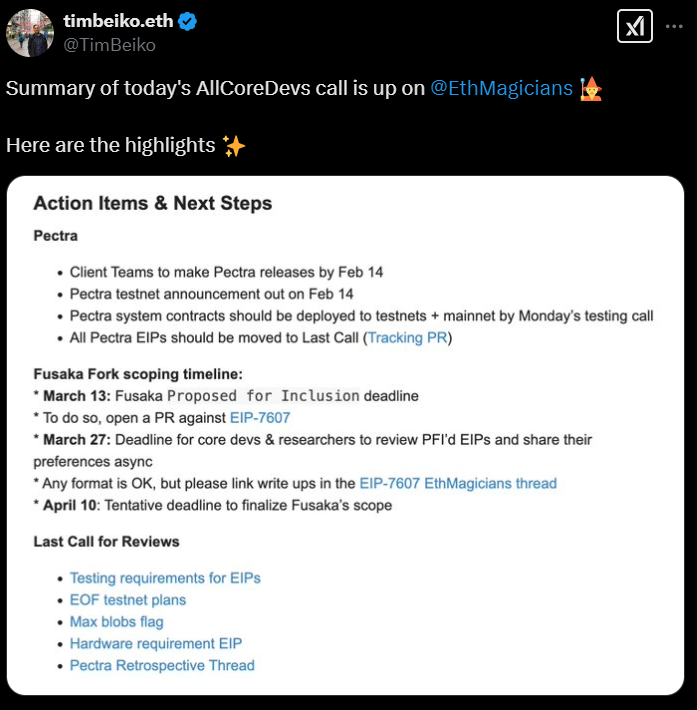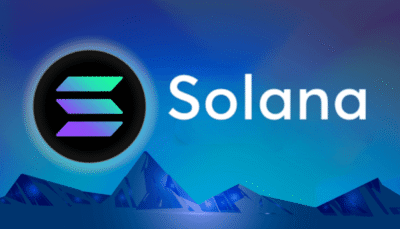Ethereum developers are accelerating their network upgrade roadmap, unveiling plans for the Pectra and Fusaka upgrades. These enhancements aim to streamline protocol efficiency, enhance scalability, and strengthen Ethereum’s position as the leading smart contract platform.
A More Efficient Ethereum: Pectra and Fusaka Explained
Ethereum’s Pectra and Fusaka upgrades aim to improve speed, reduce costs, and enhance security, core challenges for the network.
- Pectra Upgrade: Expected to introduce improvements in execution layer efficiency, optimizing how transactions are processed and reducing computational overhead.
- Fusaka Upgrade: Designed to bolster Ethereum’s scalability, focusing on increasing the network’s throughput and preparing for broader adoption of layer-2 solutions.
Both upgrades work in tandem to streamline Ethereum’s consensus and execution layers, making the network more competitive in the evolving blockchain space.
Why These Upgrades Matter
Ethereum’s scalability challenges have been a long-standing issue, particularly as DeFi, NFTs, and enterprise applications continue to expand. The Pectra and Fusaka upgrades aim to remove bottlenecks in the network’s efficiency while ensuring that Ethereum remains decentralized and secure.

Some of the expected benefits include:
- Lower gas fees for users and developers.
- Faster transaction finality, reducing delays in processing times.
- Greater support for rollups, strengthening Ethereum’s layer-2 ecosystem.
- Improved smart contract execution, enabling more complex applications.
Ethereum’s Roadmap: Faster and More Responsive
Ethereum’s development roadmap has often been seen as slow-moving due to its rigorous testing and security focus. However, with increasing competition from alternative smart contract platforms, Ethereum developers are committed to a more aggressive upgrade cycle.
The push for Pectra and Fusaka comes after Ethereum’s successful Dencun upgrade, which focused on proto-danksharding and improving data availability for rollups. Now, Ethereum core developers are shifting towards more frequent and modular upgrades, allowing for quicker improvements without sacrificing stability.
The Future of Ethereum and Broader Market Implications
As Ethereum continues to evolve, the adoption of Pectra and Fusaka could reshape its market positioning in the blockchain industry. These upgrades not only ensure better scalability and efficiency but also reinforce Ethereum’s role in DeFi, enterprise blockchain solutions, and decentralized applications.
Moreover, a faster roadmap signals that Ethereum’s developers are prioritizing user experience and network efficiency, which could lead to increased adoption and developer activity. Institutional interest in Ethereum-based applications is also expected to grow as the network becomes more capable of handling high transaction volumes with lower costs.
Final Thoughts
Ethereum’s Pectra and Fusaka upgrades mark a major step forward in the blockchain’s continuous evolution. By accelerating development cycles, reducing transaction fees, and improving network scalability, Ethereum is positioning itself as the most robust and adaptable blockchain ecosystem.
As these upgrades roll out, the industry will be watching closely to see how they impact Ethereum’s competitive edge, developer engagement, and long-term sustainability. With a more efficient and scalable network, Ethereum is well on its way to cementing its dominance in the Web3 and decentralized finance landscape.





